The first ads that I want to talk about, represent less than charismatic species. When biologists talk about charismatic species, we are talking about animals that the public, in general, finds cute, attractive, or are otherwise drawn to, in some way. This means that the organizations that represent their causes often get more money. And those that are not as "attractive" are often underrepresented.
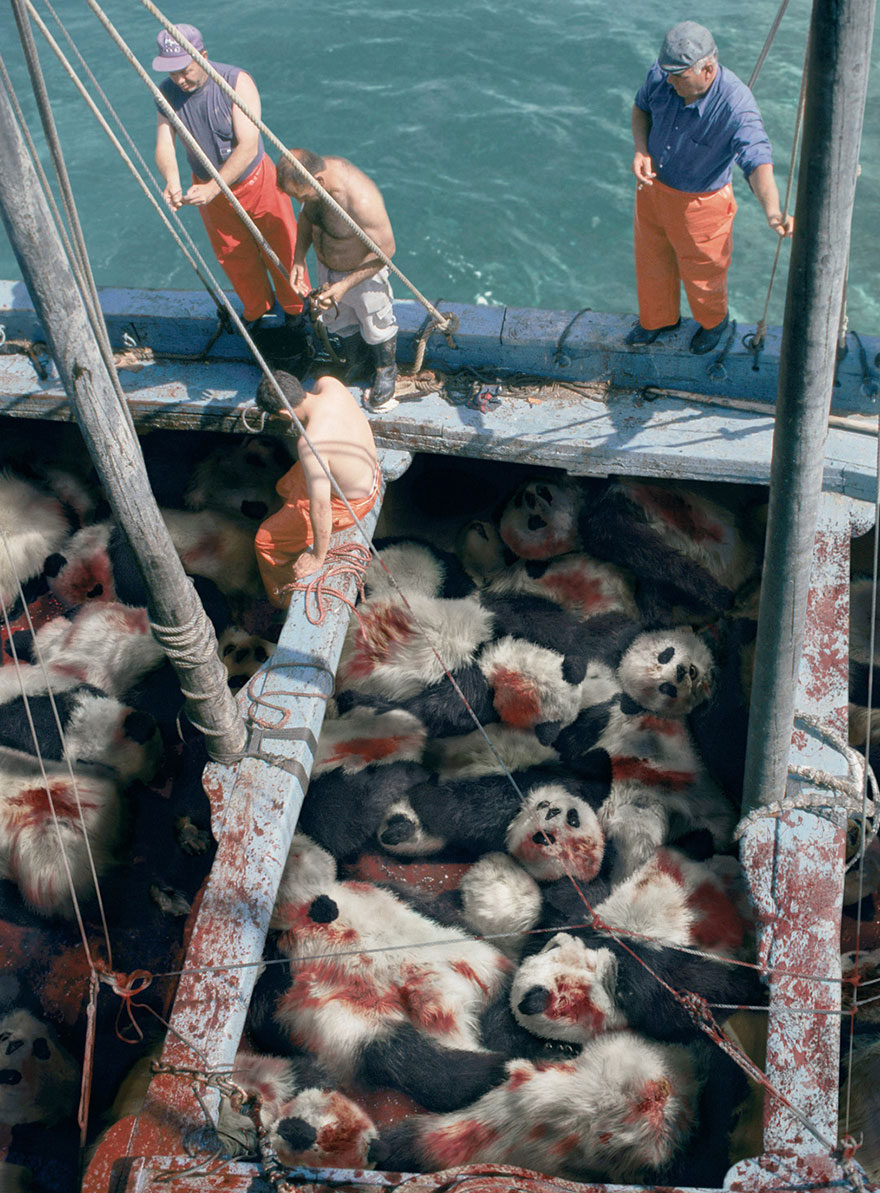 |
| Commissioned by Sea Shepherd, this ad wants you to think of something "cute" being over fished, instead of less attractive tuna. |
The next ones, from WWF, tackle the same topic, but in a less bloody way.
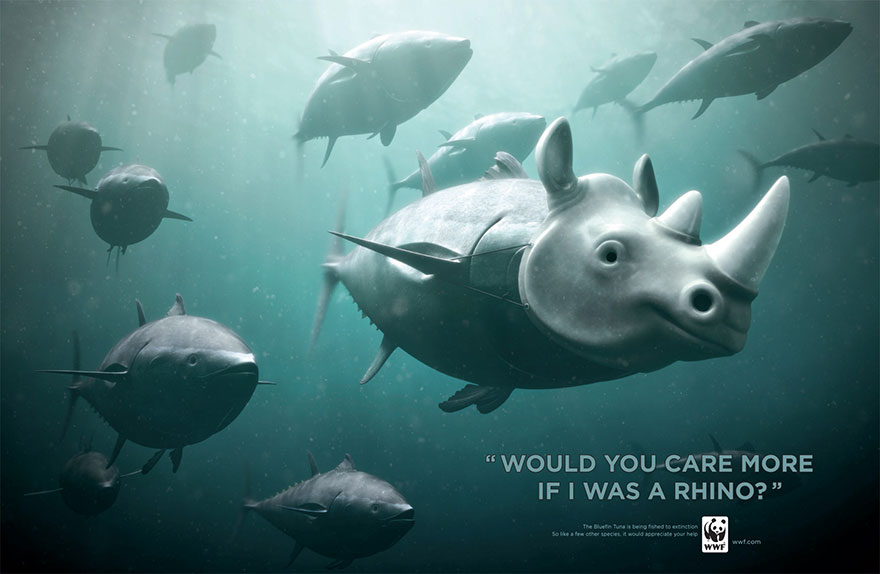 |
| Tuna as rhino. |
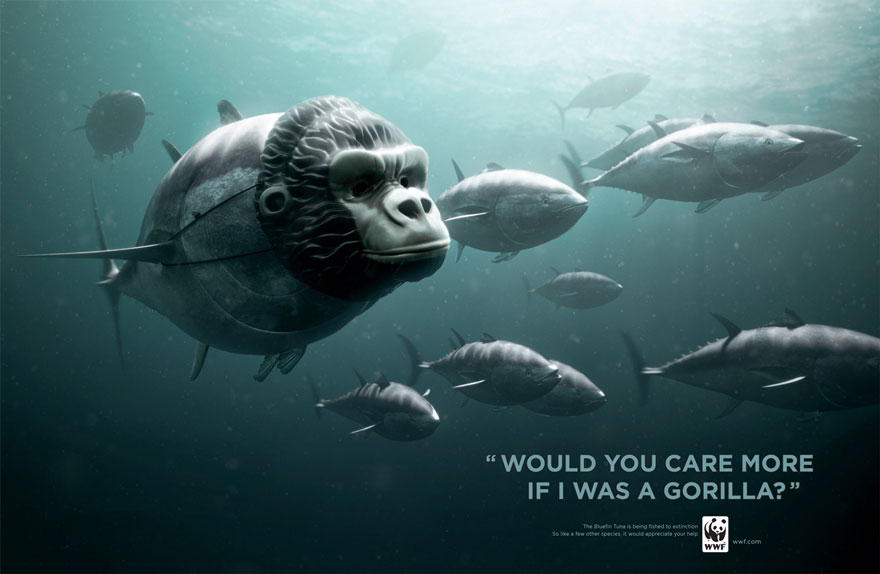 |
| Tuna as gorilla. |
In my opinion, the first one is more powerful, but then, Sea Shepherd is known for being more aggressive, and trying to get attention for the cause.
The next ads, and there are many on the Bored Panda page, deal with extinction. My favorites are the ones that have a picture of every animal of a certain species, in one ad, such as this one:
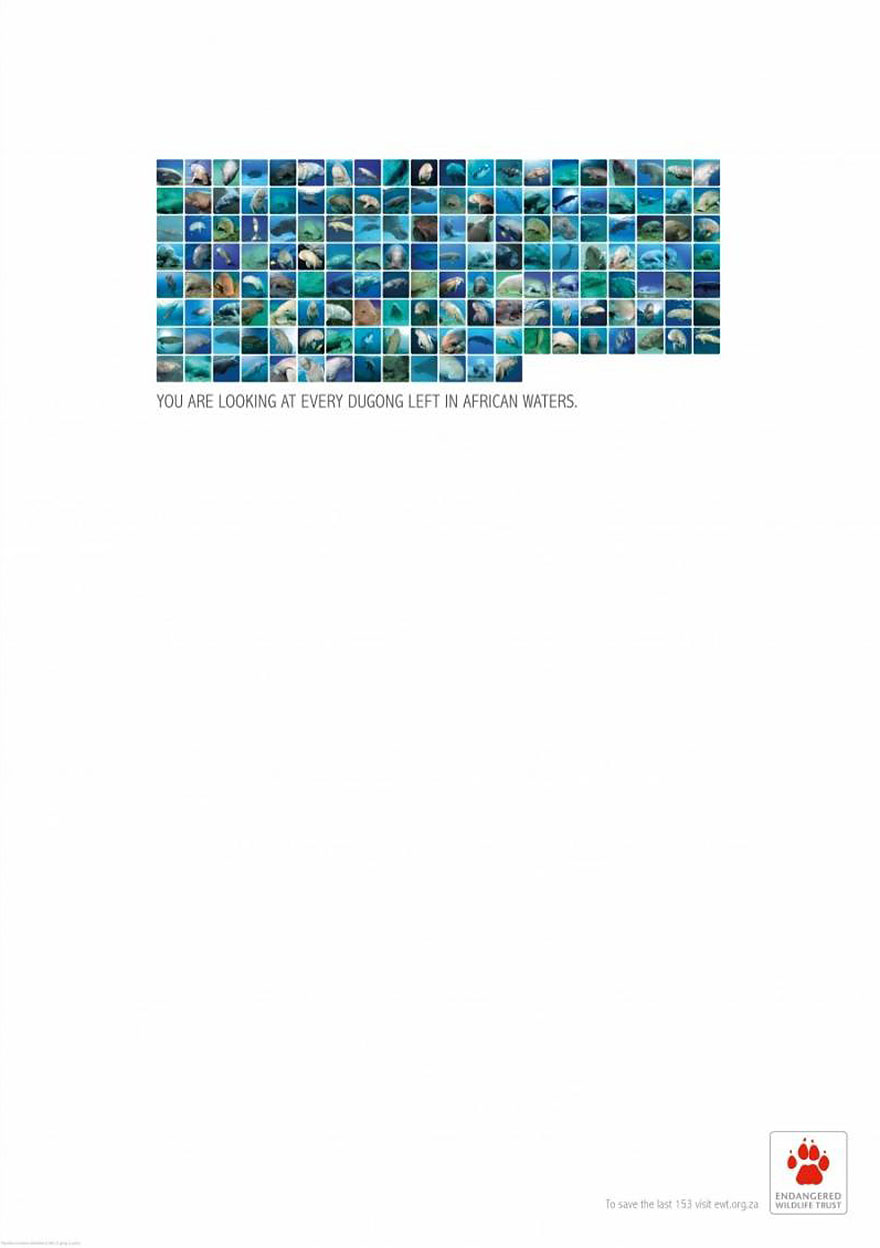 |
| From Endangered Wildlife Trust, this poster shows ALL 153 dugongs left in African waters. |
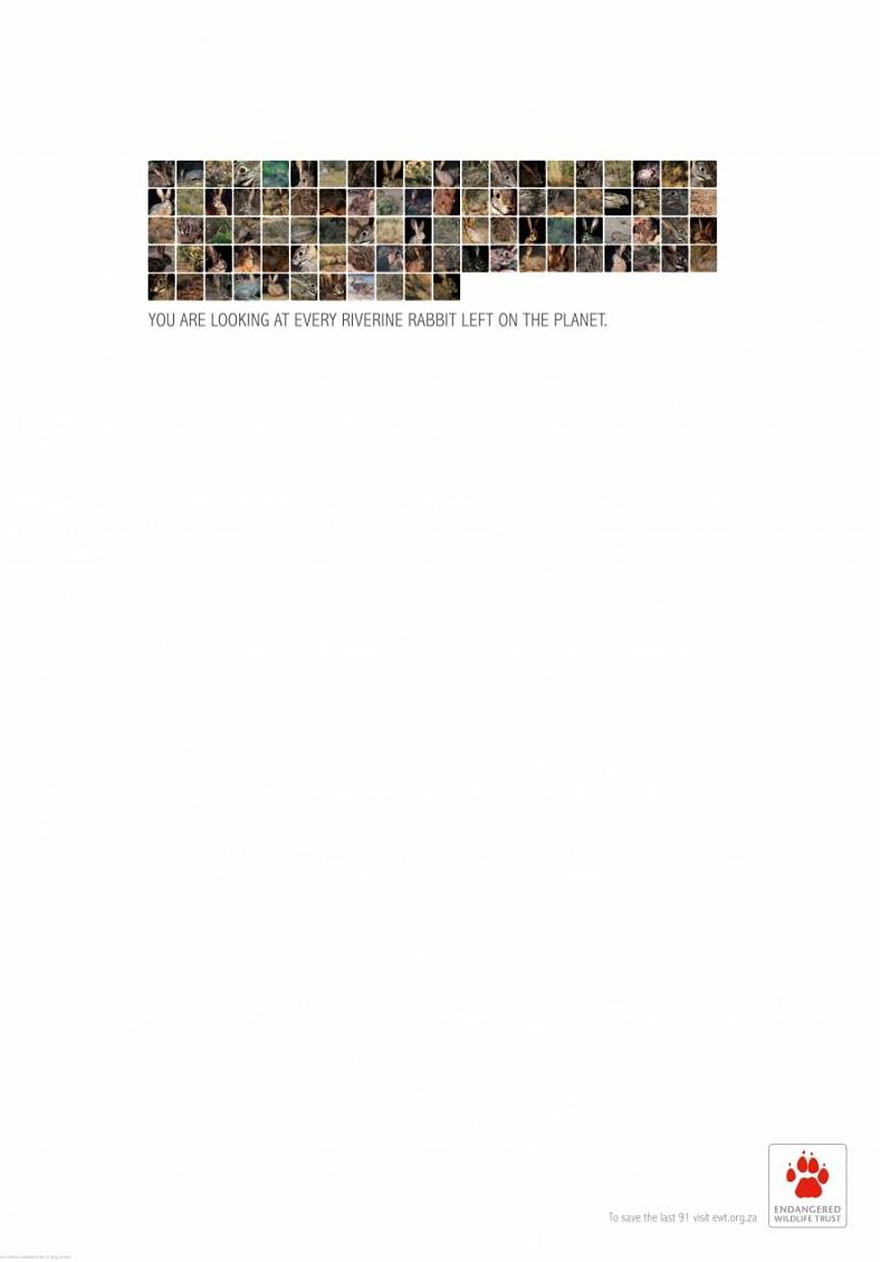 |
| Again, from Endangered Wildlife Trust, this poster shows ALL 91 Riverine Rabbits left on the PLANET. |
I think it's easy for us to forget that extinction rates are extremely high, and unnatural. These are a good way for people to visualize what is actually going on in the world. It's one thing to read these facts, but to know that you are looking at the individuals has a much more powerful impact.
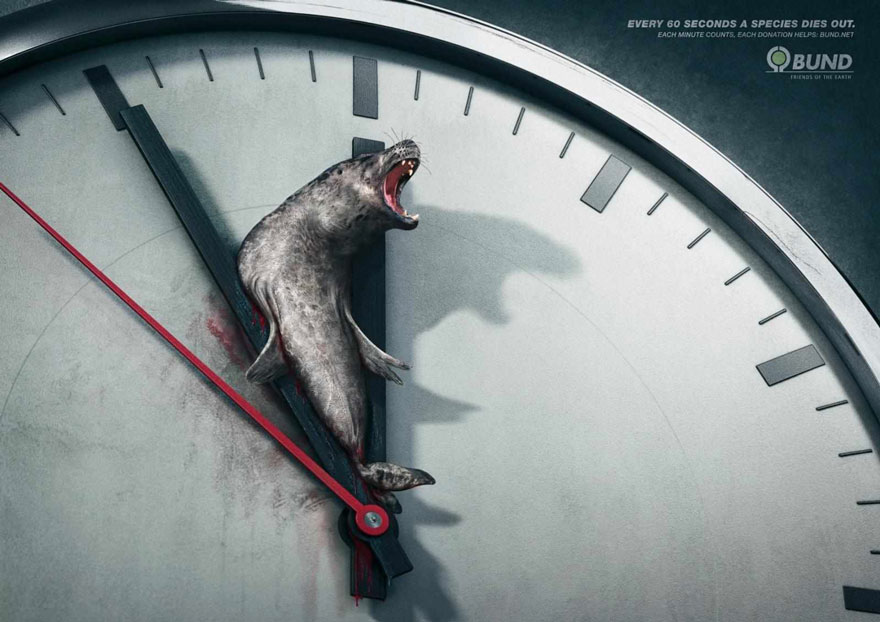 |
| From Bund, a German organization that I haven't previously heard of. |
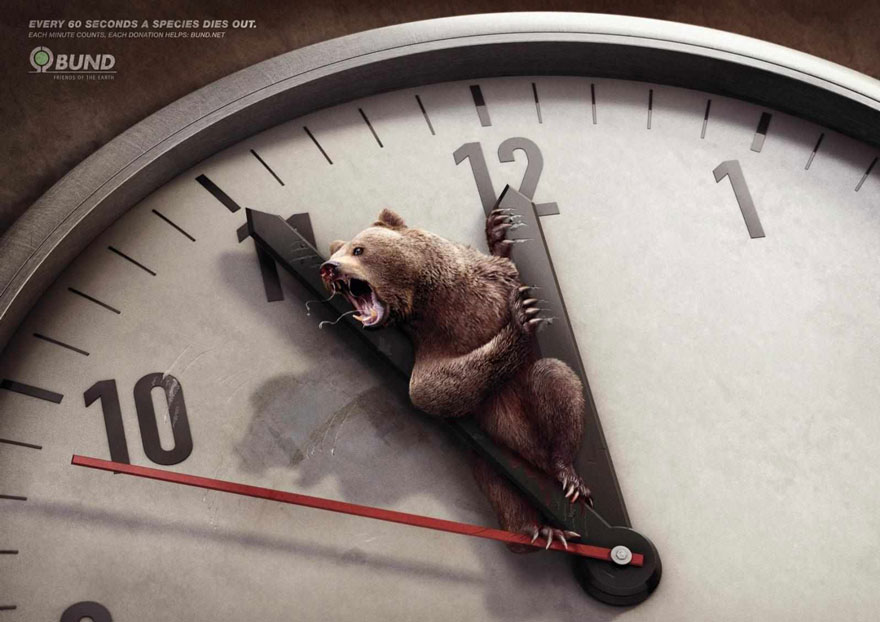 |
| Another from Bund. |
These ads from Bund play on the time factor involved in trying to save these animals. Most times, people don't realize how close some species are to being extinct until they hear on the news that they are gone for good.
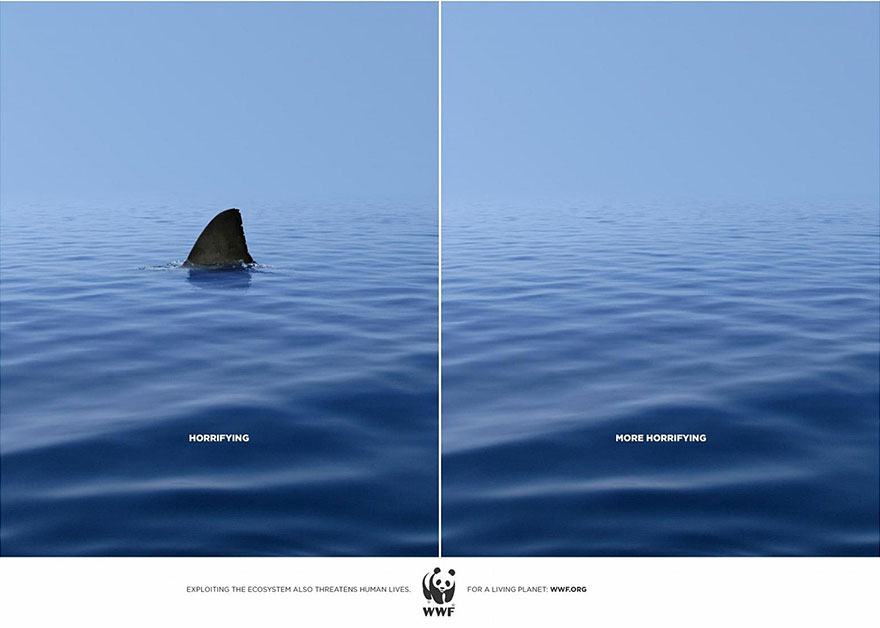 |
| From WWF. |
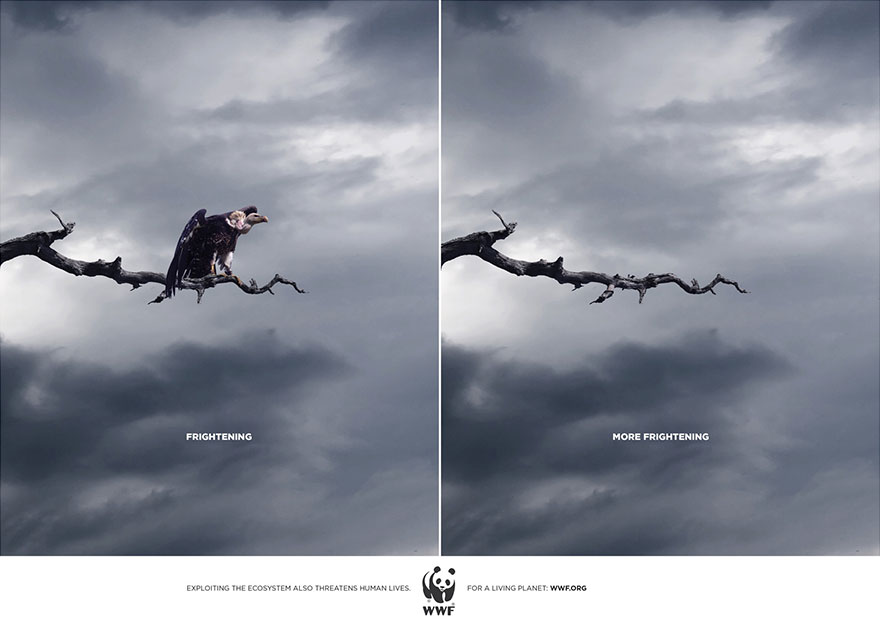 |
| Another from WWF. |
A couple from WWF. A well known organisation that uses a charismatic animal as it's icon, turns to less than charismatic animals to bring attention to the loss of species.
What I'm not sure most people realize about extinction is that once these animals are gone, they are gone. Okay, that sounds cliche, but it's true. Now, once these animals are gone, it leaves a hole in the web of life. That means that when an apex predator such as a shark goes extinct, or even has low population numbers, then all the other animals that were their food, or dependent on scraps from them, have trouble. For instance, with a decline in the shark population, seal numbers could significantly increase, resulting in pressure on the resources they, and others, depend on. This causes a chain reaction that could change the environment they depend on.
(All the above ads are copyrighted to their original owners. I have no ownership over these images.)
No comments:
Post a Comment